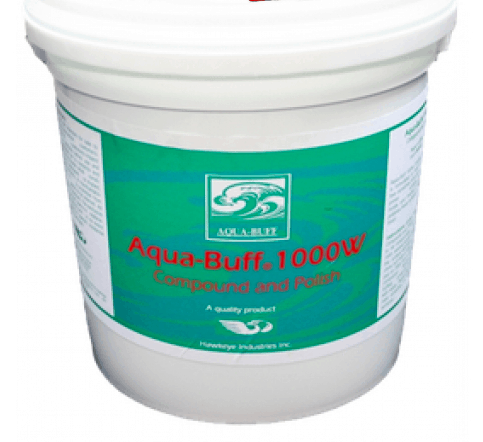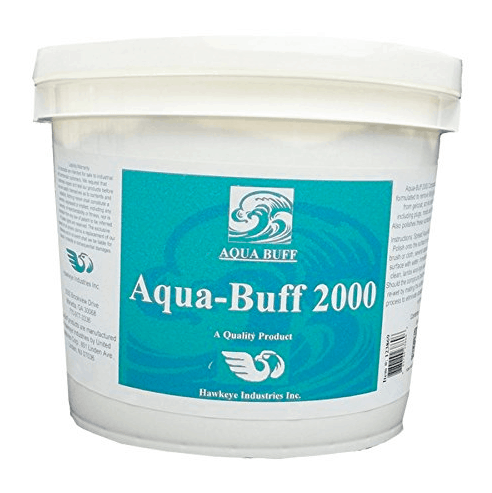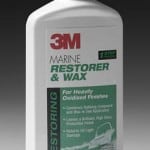If you are looking to remove some unwanted scratches on your boat or to bring back shine into your gelcoat, Aqua Buff is for you!
Aqua Buff is a polishing compound that we offer in two variations: Aqua Buff 1000-W and Aqua Buff 2000. It is mainly used as a way to remove heavy oxidation, sanding scratches, and swirl marks from gelcoat. There are no oils or polymers in Aqua Buff, so the surface you see is the true surface.

The Aqua Buff 1000-W is used for deep scratches and heavy oxidation. It has a blue-green color which is why is not recommended for white hulls. Use Aqua Buff 1000-F on white surfaces. Aqua Buff 1000-W removes 320 – 600 grit scratches.

Aqua Buff 2000 is used for finer scratches, swirl marks, and light oxidation. Use it to remove 1000 grit scratches and higher. Cleans and removes scratches from Fiber-Reinforced-Plastic parts, metals, and painted surfaces. It is strong enough for most uses and provides a shiny finish.
Application Instructions
- Apply a small portion of Aqua–Buff 1000-W or 2000 on the surface using a brush or microfiber cloth (stick to a small area)
- Use a spray bottle to mist the surface with water. Only use about a coin-size amount of compound per square foot.
- Immediately machine buff* with a clean, damp, compound pad.
Use wool or wool/blend pads only.
*Use machine buffers that generate at least 2500 rpm for best results.
For the best techniques and tips on how to apply Aqua Buff please watch the video below.

